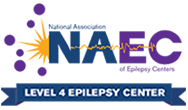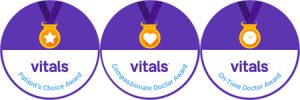Ankylosing Spondylitis is a form of inflammatory arthritis that affects the spine primarily, though other joints can be affected as well. It causes inflammation in the vertebrae, leading to severe back pain. It can lead to pain, inflammation, and stiffness in the hips, ribs, shoulders, hands, feet, and eyes. If the rib cage is affected, it can cause heart and lung problems. In severe cases, ankylosis may occur; new bone forms in the spine and fuses sections of the vertebrae, leading to immobility.
Ankylosing Spondylitis Symptoms
Ankylosing Spondylitis affects men more than women and is usually noticed during young adulthood.
Early signs and symptoms include pain and stiffness in the lower back and hips, especially in the mornings upon waking and after periods of sitting or inactivity.
Common areas of pain include:
- Sacroiliac joint (between the base of the spine and the pelvis)
- Lower back
- The cartilage between the breast bone and ribs
- Hip and shoulder joints
- Places where tendons and ligaments attach to bones (spine and back of heels)
Severe cases of Ankylosing Spondylitis can lead to complications, such as ankylosis (spinal fusion), eye inflammation, heart problems, and compression fractures.
Ankylosing Spondylitis Diagnosis
Your doctor will ask you a variety of questions to obtain a detailed personal and family medical history. They will feel the spine and ask where you feel pain. You will be asked to move or bend in certain directions to assess your mobility and range of motion. Your doctor will order imaging tests, including X-Rays and an MRI, to examine the spine.
Ankylosing Spondylitis Treatments
Treatment of Ankylosing Spondylitis is aimed to reduce pain, improve quality of life, and halt the progression of the disease. Treatment is most successful in the early stages of the condition. Most cases are treated with either physical therapy, medication, or a combination approach.
Physical Therapy
Your doctor will recommend regular exercise and physical therapy to assist you in proper movement and stretching. A physical therapist can create an individualized exercise regimen for you based on your needs and the severity of your condition.
PT consists of range-of-motion and flexibility exercises designed to help you maintain proper spine function and posture. Your therapist can explain proper sleeping positions for your condition, as well as the right way to walk to maintain an upright posture.
Medications
There are medications available to relieve pain and reduce inflammation called NSAIDs (non-steroidal anti-inflammatory drugs). However, long-term use of NSAIDs is not recommended as it can damage the stomach lining.
If you do not respond to NSAIDs, your doctor may recommend a TNF blocker (tumor necrosis factor) or interleukin inhibitor. These medications target inflammation and improve the body’s defense against infection. However, these drugs are immunosuppressants, meaning they can weaken your immune system and make you more susceptible to infection.
Surgery
Surgery for Ankylosing Spondylitis is not usually necessary. However, your doctor may recommend surgery if you experience severe pain and joint damage to the point that a joint replacement may be helpful.
For a comprehensive evaluation from the experts at Brain2Spine Institute, call 727-828-8400.






